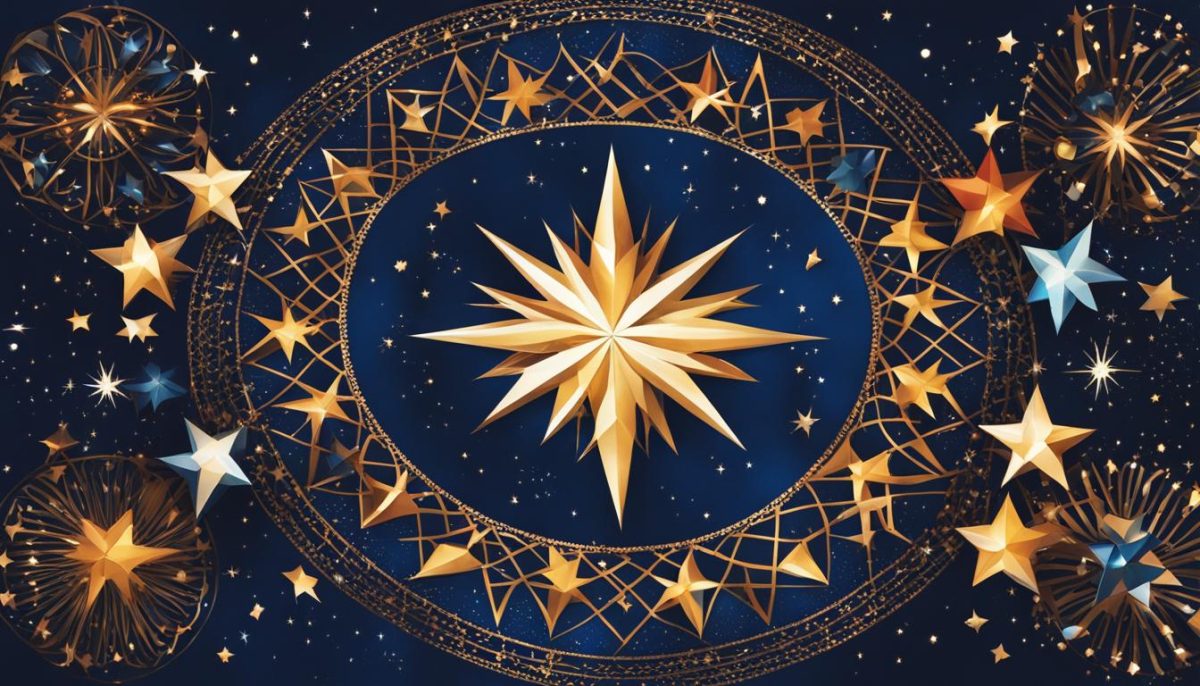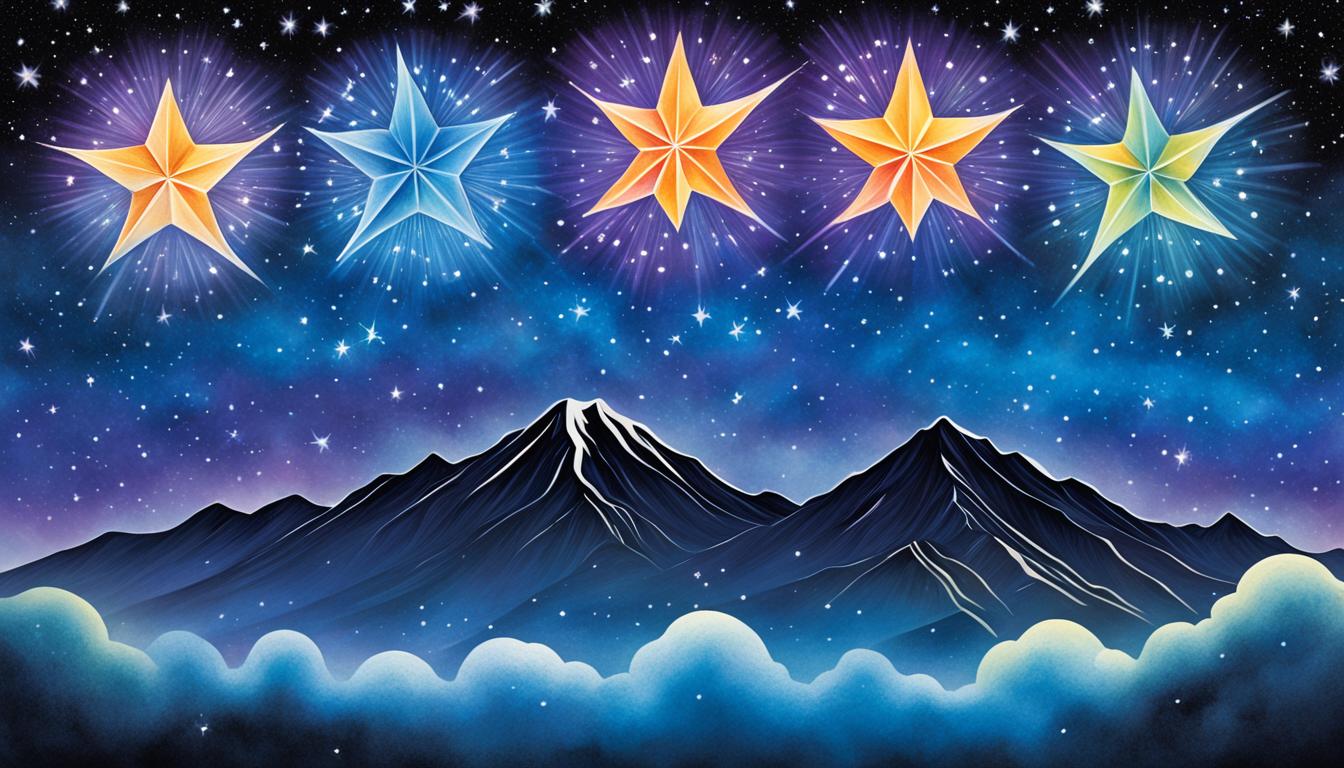Welcome to our exploration of Matariki, the Maori New Year, and its ancient traditions. Matariki is a significant celebration in New Zealand, marking the beginning of the Maori lunar calendar. Central to this celestial event are the seven stars that form the cluster known as Matariki.
Curious to know the names of these magnificent stars? In this article, we will reveal the names of each star and uncover the rich cultural significance they hold. Join us as we delve into the fascinating world of Matariki and its celestial wonders.
But first, let’s take a moment to marvel at the beauty of Matariki. Below is an image capturing the essence of these seven stars, radiating their timeless brilliance against the backdrop of the night sky.
Now, let’s embark on our journey through the celestial realms to discover the names and symbolism behind each of these captivating stars.
The Significance of Matariki in Maori Culture
In Maori culture, Matariki holds immense significance as the celebration of the Maori New Year. This annual event is deeply rooted in the traditions and spiritual beliefs of the Maori people. Matariki marks the beginning of a new lunar year and is a time to reflect, connect, and honor the past while embracing the future.
The Cultural Importance of Matariki
Matariki holds a special place in Maori culture as a symbol of new beginnings, growth, and renewal. It is a time to celebrate the connections between people, land, and the environment. The seven stars of Matariki are seen as navigation points for the year ahead, guiding Maori communities in their planting and harvesting seasons.
The Maori New Year celebration provides an opportunity for reflection and remembrance of loved ones who have passed away. It is a time to honor the ancestors and their wisdom, acknowledging their role in shaping Maori identity and culture.
Moreover, Matariki brings communities together through various cultural activities, including song, dance, storytelling, and feasting. These festivities foster a sense of unity and pride in Maori heritage.
The Connection to the Seven Stars
At the heart of Matariki are the seven stars that make up the Pleiades star cluster. Each star has its own significance and represents different aspects of life and nature. The Maori assigned names to these stars, infusing them with cultural meaning and spiritual significance.
The seven stars of Matariki are: Matariki, Tupu-ā-nuku, Tupu-ā-rangi, Waipuna-ā-rangi, Waitī, Waitā, and Ururangi. Together, they symbolize abundance, growth, whakapapa (genealogy), spiritual guidance, fertility, harvest, and hope.
These celestial bodies guide Maori communities in their connection to the land, the environment, and the seasons. They serve as a reminder of the cyclical nature of life, emphasizing the importance of balance and harmony with nature.

As the Maori New Year approaches, the significance of Matariki becomes even more pronounced. It is a time for Maori communities to come together, honor their heritage, and embrace the teachings and wisdom of their ancestors. The celebration of Matariki reflects the deep cultural roots and spiritual connection that the Maori people have with the land, the stars, and each other.
Unveiling the Names of the Seven Stars of Matariki
The seven stars of Matariki hold great cultural significance in Maori tradition. Each star has a unique name and plays a vital role in the Maori lunar calendar, guiding important celestial and agricultural events. Let’s explore the names of these celestial gems and their symbolism in the Maori culture.
Tupu-ā-nuku
The first star of Matariki is named Tupu-ā-nuku. Known as the “Guardian of Food Crops,” it represents the bounty of the Earth and the sustenance it provides. Tupu-ā-nuku serves as a guardian over the land, ensuring the growth and fertility of crops.
Tupu-ā-rangi
Tupu-ā-rangi, the second star, is associated with fruits, vegetables, and other cultivated foods. It represents the connection between the Earth and the heavens, and its name translates to “Guardian of the Sky.” Tupu-ā-rangi oversees the well-being and abundance of the food sources from above.
Waipuna-ā-rangi
Waipuna-ā-rangi, the third star, holds the name “The Waters of Rangi.” It represents the connection to the celestial realm and the importance of water as a life-giving resource. Waipuna-ā-rangi ensures the presence of rainfall, rivers, and other water sources necessary for the vitality of the land and its inhabitants.
Waitī
Waitī, the fourth star, is associated with freshwater and its significance in sustaining life. Its name means “The Watery One” and reflects its role in ensuring the abundance of rivers, lakes, and wetlands. Waitī maintains the delicate ecological balance of freshwater ecosystems.
Waitā
Waitā, meaning “The Tides,” is the fifth star of Matariki. Its name reflects its association with the ocean and the powerful forces of the tides. Waitā symbolizes the ebb and flow of life and the importance of the marine environment to the Maori people.
Waipunarangi
Waipunarangi, the sixth star, represents rainbows and their significance as a bridge between the physical and spiritual realms. Its name translates to “The Waters of the Rainbows.” Waipunarangi serves as a divine connection, bringing blessings and spirituality to the world.
Ururangi
The final star of Matariki is Ururangi, which means “The Winds.” Ururangi embodies the spirit of the wind and its influence on weather patterns and navigation. It guides Maori voyagers across the vast oceans and represents the adventurous nature of the Maori people.
These seven stars of Matariki, with their unique names and symbolism, hold great cultural significance in the Maori tradition. They share a deep connection with the Earth, the heavens, and the elements that sustain life. Understanding their importance helps us appreciate the rich cultural heritage of the Maori people and their profound relationship with the cosmos.
The Symbolism and Meanings Behind the Stars of Matariki
The stars of Matariki hold deep symbolism and meanings in Maori culture. Each of the seven stars represents a unique aspect of life and nature, contributing to the rich tapestry of Maori mythology and spirituality.
Starting with the star called Matariki, it is seen as the motherly figure, signifying growth, reflection, and new beginnings. The presence of Matariki signals the Maori New Year and the opportunity to set intentions for the year ahead.
Puanga, another significant star, is associated with harvest and abundance. It guides the Maori people in their agricultural practices, marking the time to gather their crops and celebrate the fruits of their labor.
Tupu-a-Nuku represents the sustenance and nurturing qualities of the earth. It symbolizes the importance of connection to the land and the role it plays in providing for the Maori communities.
Tupu-a-Rangi, on the other hand, embodies spiritual growth and exploration. It encourages the Maori people to seek knowledge, wisdom, and enlightenment, inspiring personal and collective transformation.
Waiti and Waita are twins stars representing freshwater bodies and the bountiful resources they provide. They highlight the significance of clean water in sustaining life and balance in the natural world.
Finally, Waipuna-ā-Rangi represents the celestial waters, linking the earthly realm to the spiritual realm. It symbolizes the connection between humans and the divine, offering spiritual guidance and protection.
Each of these stars carries immense cultural significance within the Maori community, honoring the past, celebrating the present, and looking towards the future. The symbolism and meanings of Matariki stars serve as a reminder of the interconnectedness between humans, nature, and the spiritual world, fostering a deep appreciation for the Maori heritage.




